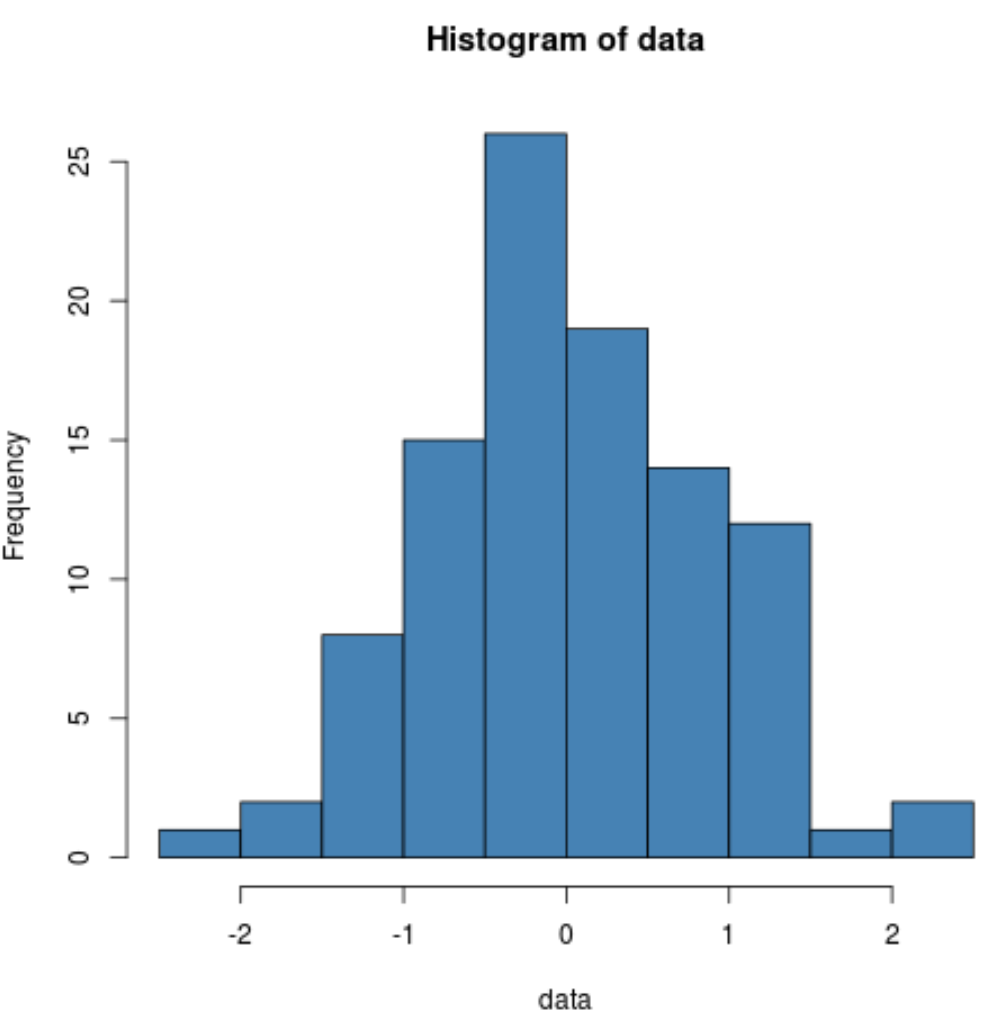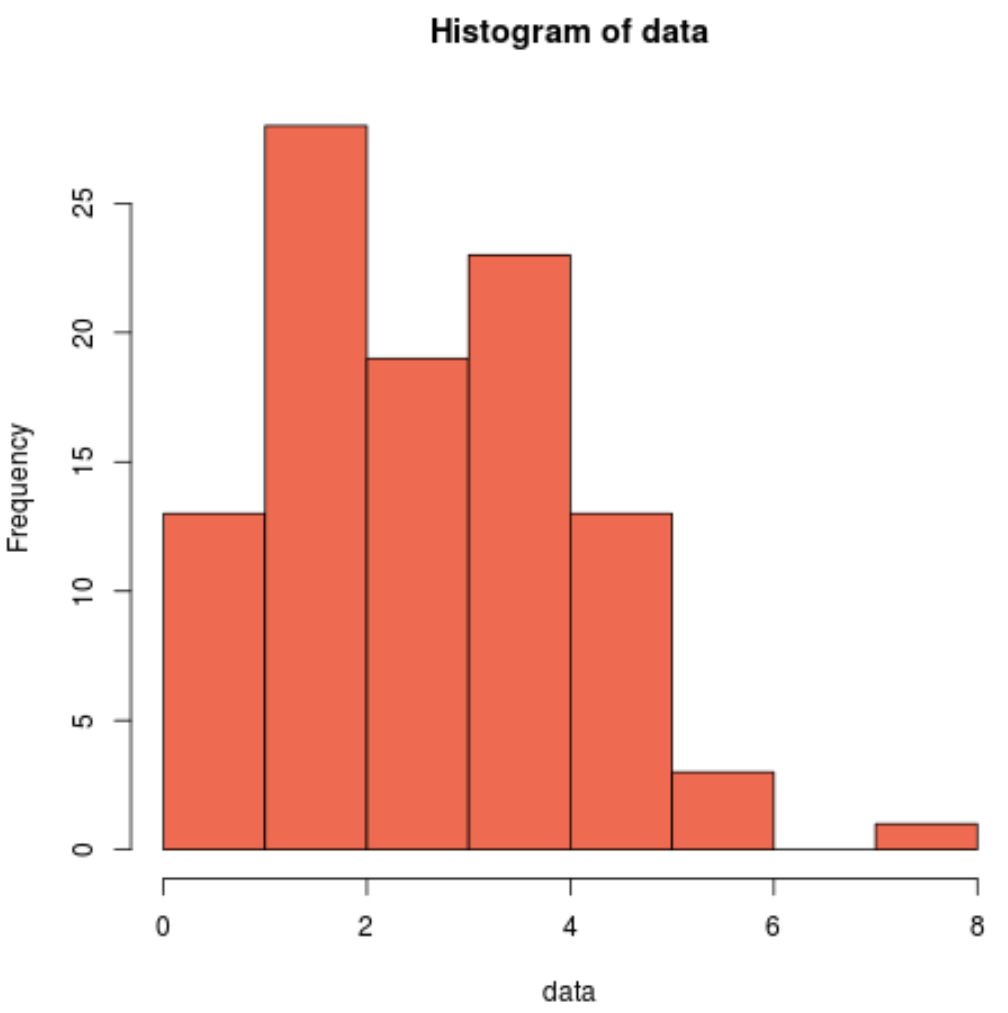The Shapiro-Wilk test is a test of normality. It is used to determine whether or not a sample comes from a normal distribution.
This type of test is useful for determining whether or not a given dataset comes from a normal distribution, which is a common assumption used in many statistical tests including regression, ANOVA, t-tests, and many others.
We can easily perform a Shapiro-Wilk test on a given dataset using the following built-in function in R:
shapiro.test(x)
where:
- x: A numeric vector of data values.
This function produces a test statistic W along with a corresponding p-value. If the p-value is less than α =.05, there is sufficient evidence to say that the sample does not come from a population that is normally distributed.
Note: The sample size must be between 3 and 5,000 in order to use the shapiro.test() function.
This tutorial shows several examples of how to use this function in practice.
Example 1: Shapiro-Wilk Test on Normal Data
The following code shows how to perform a Shapiro-Wilk test on a dataset with sample size n=100:
#make this example reproducible set.seed(0) #create dataset of 100 random values generated from a normal distribution data #perform Shapiro-Wilk test for normality shapiro.test(data) Shapiro-Wilk normality test data: data W = 0.98957, p-value = 0.6303
The p-value of the test turns out to be 0.6303. Since this value is not less than .05, we can assume the sample data comes from a population that is normally distributed.
This result shouldn’t be surprising since we generated the sample data using the rnorm() function, which generates random values from a normal distribution with mean = 0 and standard deviation = 1.
Related: A Guide to dnorm, pnorm, qnorm, and rnorm in R
We can also produce a histogram to visually verify that the sample data is normally distributed:
hist(data, col='steelblue') We can see that the distribution is fairly bell-shaped with one peak in the center of the distribution, which is typical of data that is normally distributed.
Example 2: Shapiro-Wilk Test on Non-Normal Data
The following code shows how to perform a Shapiro-Wilk test on a dataset with sample size n=100 in which the values are randomly generated from a Poisson distribution:
#make this example reproducible set.seed(0) #create dataset of 100 random values generated from a Poisson distribution data #perform Shapiro-Wilk test for normality shapiro.test(data) Shapiro-Wilk normality test data: data W = 0.94397, p-value = 0.0003393
The p-value of the test turns out to be 0.0003393. Since this value is less than .05, we have sufficient evidence to say that the sample data does not come from a population that is normally distributed.
This result shouldn’t be surprising since we generated the sample data using the rpois() function, which generates random values from a Poisson distribution.
Related: A Guide to dpois, ppois, qpois, and rpois in R
We can also produce a histogram to visually see that the sample data is not normally distributed:
hist(data, col='coral2') We can see that the distribution is right-skewed and doesn’t have the typical “bell-shape” associated with a normal distribution. Thus, our histogram matches the results of the Shapiro-Wilk test and confirms that our sample data does not come from a normal distribution.
What to Do with Non-Normal Data
If a given dataset is not normally distributed, we can often perform one of the following transformations to make it more normal:
1. Log Transformation: Transform the response variable from y to log(y).
2. Square Root Transformation: Transform the response variable from y to √y.
3. Cube Root Transformation: Transform the response variable from y to y1/3.
By performing these transformations, the response variable typically becomes closer to normally distributed.
Check out this tutorial to see how to perform these transformations in practice.
Additional Resources
How to Conduct an Anderson-Darling Test in R
How to Conduct a Kolmogorov-Smirnov Test in R
How to Perform a Shapiro-Wilk Test in Python


